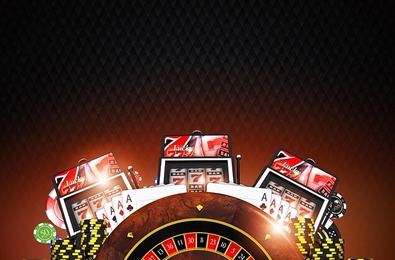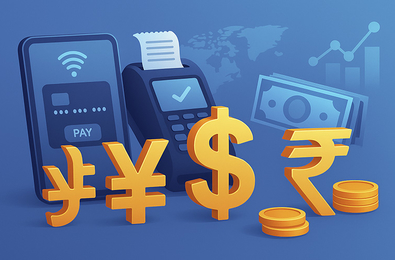Microtargeting and Neuromarketing: the Actions of VIP Gamers
While most clients make their first deposits and study slot mechanics, VIP customers stick to different rules, with high stakes and unique expectations. Technologies that can predict what players will do next are increasingly coming to the fore.
Online Casino Market experts explain how to improve the user experience using the most innovative tools.
About Neuromarketing

It applies knowledge about the brain and human psychophysiology to better understand consumers’ actions. The approach is based on neuroscience and psychology, analyses emotions, impulses, dopamine response, attention, and memory.
The goal of the concept is to understand how people make decisions, the emotions that influence their choices, and the ways players respond to various visual, auditory, and behavioural interventions.
This is especially relevant in the gambling niche because:
- the sessions are built on emotions and impulses;
- decisions are often made quickly and irrationally;
- customers react to various stimuli almost subconsciously.
When working with VIP clients, the approach becomes a powerful instrument for increasing retention and LTV (Lifetime Value) indicators.
Basic Set of Tools
Key mechanisms of neuromarketing:
- Eye-tracking. In this case, special cameras are used. Specialists apply them to create and test engaging UX interfaces.
- Facial Emotion Recognition. AI analyses the gambler's expression, after which it evaluates his reactions to wins, bonuses, and losses. The tool is designed to customise advertising banners.
- GSR. The solution measures sweating — an indicator of stress and excitement. Based on the data obtained, an assessment of the emotional peak is carried out (for example, when the victory is near).
- EEG. Electroencephalography is a brain-wave reading. This method is in great demand in medicine. In gambling, it is used less often — mainly in UX laboratories of large casino brands for deep analysis of behavioural reactions.
- A/B testing with neuro-analysis elements. These are tests for the perception of different versions of bonuses, interfaces, animations, and other game development components. During the check, a study is conducted of the players' responses to various types of activities and the selection of “working” options.
- Heatmaps. This is a visualisation of the “hot” zones of the interface. It helps to improve the location of UI/UX elements.
Key Operating Principles
Let us consider the features of the concept in the casino niche.
Emotional Triggers
VIP clients often make decisions impulsively, under the influence of sentiments.
Using the analysis of micro-emotions (for example, eye-tracking, GSR sensors, or study of behavioural patterns), entrepreneurs can:
- offer bonuses at the moment of maximum emotional involvement;
- personalise the visual style of the interface;
- build “win” or “almost win” scenarios, stimulating a dopamine response.
Subliminal Stimuli
The selection of colours, sounds, animation pace, and even smell (in land-based casinos) can affect the motivation of VIP players. The goal of the impact is to create feelings of comfort, belonging, and control, which is important for gamblers with high deposit potential.
UX Analytics and Behavioural Modeling
The approach helps to personalise the interface and offers using information on:
- how a VIP client moves around the platform;
- where a person stops his gaze;
- what causes the greatest response from consumers.
Application of Neuromarketing in iGaming: How It Works

This is not just a technology but a new philosophy of working with VIP customers, a transition from mass online casino promotion to a deeply individual and emotionally accurate approach.
The solution makes interaction with the virtual portal comfortable, predictable, and highly effective for both operators and gamblers.
Analysis of Sessions
With the help of AI systems and neuromarketing data, it is possible to determine:
- when users lose attention;
- at what moments it is worth providing bonuses or mini-rounds;
- what design style attracts the audience (minimalism, futurism, or classics).
Testing the Creatives
Eye-tracking and neuroanalysis enable operators to assess advertising banners, lobbies, and game features at the subconscious level, not just clicks and conversions. This is especially important for high rollers who make decisions to keep placing bets based on visual and emotional stimuli.
Formation of “Emotional Ways”
The concept allows you to build individual engagement scenarios for VIP clients. This could be a launch game with a quick win, a message from a personal manager, or a tournament with an increased prize pool.
Unique offers that coincide with the peaks of emotional involvement of consumers have a good effect.
Microtargeting and Neuromarketing: Connection
These 2 areas reinforce each other in the entertainment niche, especially when working with VIP players. They are united by a common goal — to better understand and predict user behaviour in order to more accurately manage people’s attention, engagement indicators, and monetisation.
What Is Microtargeting

This is a personalised marketing strategy in which advertising or games are adapted to a narrow segment of clients or a specific person. Individual solutions are based on the actions of casino visitors, their interests, activities, and psychographic portraits.
The concept utilises data on consumer actions, including their demographics, usage patterns, reactions to new products, device preferences, and time spent on digital resources. Its task is to find the moment and format of an ideal offer.
According to eGaming Review, the implementation of behavioural microtargeting increases:
- offer conversion by 25–40%;
- high-value customer retention by 30%;
- average check and LTV by 20–50%, especially in the VIP segment.
To analyse the actions of online casino visitors, the following tools are applied:
- behavioural analytics;
- Big Data and ML;
- DMP/CDP systems;
- A/B and multivariate testing of offers.
How Microtargeting Works in Gambling
The main stages of interaction with users include:
- Data collection. This is the history of deposits and bets, time of activity, wishes, as well as reactions to bonuses, promotions, or tournament mechanics. It is also important to take into account geolocation, login devices, payment methods, emotional and behavioural metrics (including scrolling speed or click patterns), etc.
- Audience segmentation. Players are classified by potential (LTV, deposit activity), preferences (slots, live entertainment, or poker), and response to specific types of offers. Depending on the patterns of activity, impulsive, strategic, or evening site visitors are distinguished.
- Personalisation. The system can automatically send bonuses to VIP users exactly at the moments when they most often make deposits. Other options are individual contests, as well as e-mail and push messages at the right time.
Interaction with VIP Customers
They require a delicate and individualised approach that takes into account their status and betting features.
The application of microtargeting allows project owners to:
- retain people with high LTV thanks to timely offers and a sense of exclusivity;
- reduce a churn rate by responding to signs of fatigue or boredom (for example, if a person begins to switch to spectator mode more often than to place bids);
- increase profitability due to solutions that match the interests of VIP users;
- adapt limits, interface, and gamification to the behaviour of each customer.
How Neuromarketing and Microtargeting Work Together
With the help of such tools, operators can, for example, record emotional responses to visual and other kinds of stimuli. Thanks to this knowledge, it is possible to encourage players at the right time.
Besides, neuromarketing technologies perform the following tasks:
- show which colours, sounds, and rhythms cause pleasure or engagement;
- help to understand what causes trust, excitement, or anxiety;
- analyse how the brain reacts to “almost winning” situations, animation, and other triggers.
Based on the data obtained, entrepreneurs can customise the UX interface and notifications depending on player groups, personalise onboarding, or retain VIP clients. Microtargeting is responsible for all these functions.
For example, neuromarketing will show that most high rollers respond positively to animations with expiring bonuses. And the second tool will set up push notifications at the moment of the gamblers’ activity, emphasising the urgency and uniqueness of the offer.
Ethical and Legal Aspects

Both concepts have great potential if moral and legislative norms are observed. This allows business owners to maintain the audience’s trust, protect the reputation of iGaming brands, and avoid sanctions.
Challenges that casino operators may face when they work with VIP users:
- The risk of hyperpersonalisation. Individual offers can exploit the emotional and cognitive weaknesses of people (for example, their impulsiveness or predisposition to ludomania).
- Manipulation of neural responses. The analysis of emotions and brain reactions to increase engagement can push the boundaries of free will.
Moral aspects of interacting with VIP players:
- Transparency of targeting. Clients must understand that their offers are personalised.
- Built-in RG filters. Algorithms will not provide persons with signs of ludomania with bonuses.
- Ethical neuromarketing. The analysis is performed only with the consent of customers and without the use of biometrics.
- Audit and control algorithms. Regular verification of targeting scenarios and access to AI logs.
- Restrictions for high-risk segments. Less advertising pressure on vulnerable players.
Legal Nuances
Some limitations and standards are regulated by the relevant documents:
- GDPR and ePrivacy Regulation (EU). The use of data on the behaviour and actions of consumers requires their informed consent. The processing of such information is regulated especially strictly.
- UK Gambling Commission norms. The government authority prohibits manipulative marketing practices. Operators are required to undergo an audit of VIP programs, including microtargeting systems.
- International Responsible Gambling standards. Personalisation should not interfere with the audience’s conscious choice. Besides, the promotion of casino entertainment aimed at clients during periods of recovery or self-exclusion is prohibited.
Kindred Group is a good example of a successful practice in the field of implementation of microtargeting and neuromarketing.
The provider has developed the Fair Personalisation model, within which the above-mentioned tools are combined with RG behavioural indicators. The system automatically excludes players with signs of loss of control from an individual newsletter.
The Main Things about Neuromarketing and Microtargeting in iGaming
Relevant marketing tools simplify and increase the effectiveness of interaction with online casino visitors.
Key features that need to be considered:
- Neuromarketing sets the depth of understanding customers, and microtargeting sets the modes of action. Together, they allow business owners to offer a personalised, emotionally stable user experience.
- The application of such instruments is associated with ethical and legal aspects. It is important for operators to adhere to the requirements of the GDPR and ePrivacy Regulation (EU), as well as to meet the standards of Responsible Gambling.
Online Casino Market will help you launch an effective marketing campaign. We offer turnkey projects, White Label platforms, payment services, and security software.
Check the information used to contact us carefully. It is necessary for your safety.
Fraudsters can use contacts that look like ours to scam customers. Therefore, we ask you to enter only the addresses that are indicated on our official website.
Be careful! Our team is not responsible for the activities of persons using similar contact details.







 Demo
Demo 


